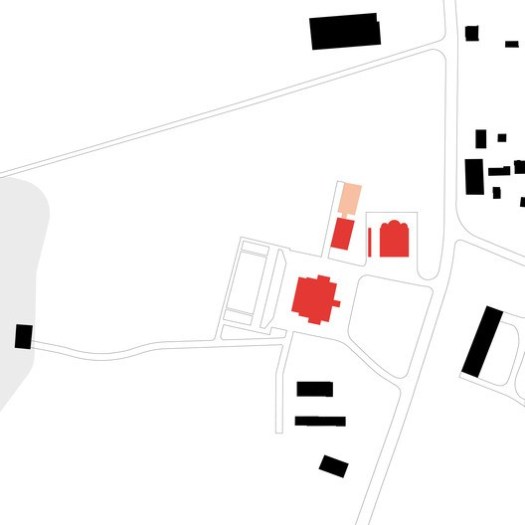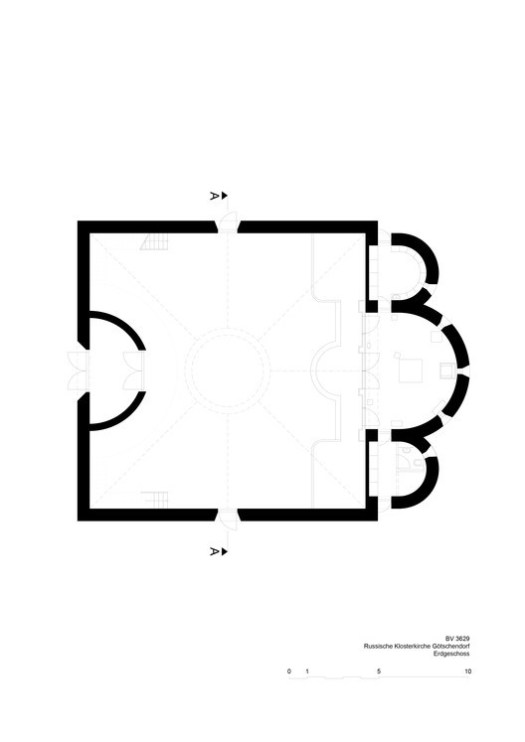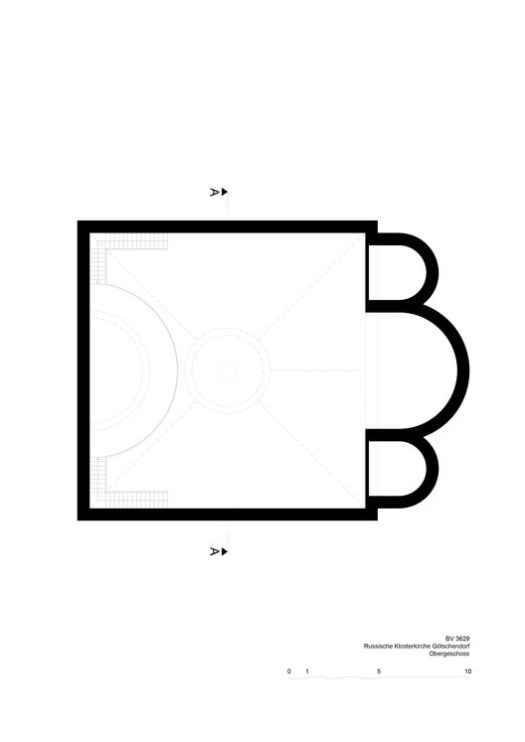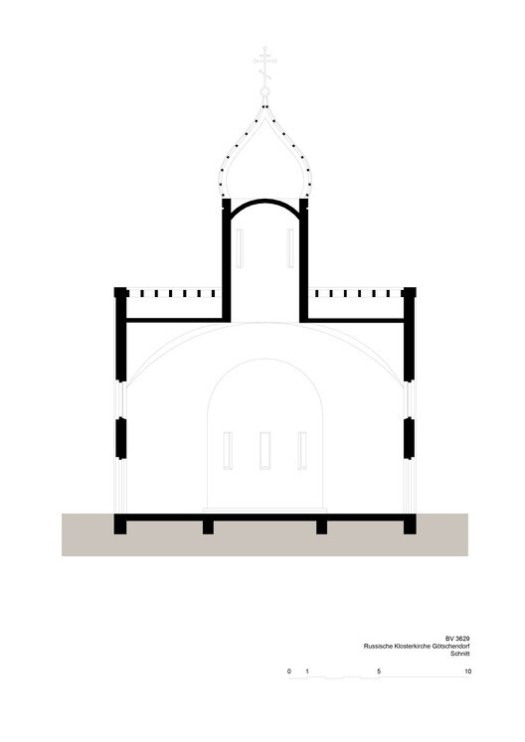<figure>
- Architects: Tchoban Voss Architekten
- Location: Götschendorf, 17268 Milmersdorf, Germany
- Architect In Charge: Sergei Tchoban, Tchoban Voss Architekten
- Design Team: Natalia von Krüchten, Ramona Schwarzweller, Ingo Schwarzweller
- Area: 358.0 m2
- Project Year: 2017
- Photographs: Lev Chestakov
- Project Partner: Philipp Bauer
- Project Leaders: Karsten Waldschmidt, Simon Bange (stages 1-4, 6); Dirk Kollendt (stage 5), Katja Fuks (stages 6-8)
 Site plan
Site plan
From the architect. This calm, secluded place in the midst of the Uckermark landscape seems to be perfect for a church construction: the idyllic village Götschendorf has only 200 inhabitants and is located on a lakeside, about one and a half hour drive from Berlin. Surrounded by the forest the gently sloping plot ranges from the village road to the lakeshore, for several centuries the small village was in possession of the Arnim family.
The monastery church of St. George was built



Located in the front part of the plot the church building became a new significant eye-catcher of the site. Despite its Russian-Byzantine building tradition with cupola, round lantern and onion dome the church is of touching plainness with its modified and simplified forms. The four-gabled volume without a plinth has a quadratic footprint with lateral length of 17 meters, 10 meters headroom in the cupola and a central spire of 6 meters height. Three apses extend the footprint in the altar area.
 Ground floor plan
Ground floor plan
 First floor plan
First floor plan
Far from big gestures the church does not contrast with the surrounding buildings but is fully integrated into the existing complex. Some few details accentuate the façades. Bricks in a bright beige-grey palette were additionally whitewashed which, depending on the light situation, evokes a slight silver or golden shimmer. Similar to this effect the light grey shingled roofs seem to have a slight metallic glow in the sunlight.
The curved narrow wooden cornices emphasize the rounded forms of the apses. The double jamb of the main door along with the stepped window cladding and pilaster strips gives the façades some more depth and movement. Narrow vertical windows reduce the interaction of the inner space with the surrounding and underline the sacral character of the building.
The church offers space for about 200 people: After having passed through the semicircle inner vestibule the visitor finds an artless, calm interior and gazes to the limed crossed-dome and to the cylinder of the light roof lantern.
 Section
Section
Product Description:
Bricks were one of the most important materials used for the new construction. Exploring two different qualities of the brick cladding, which was additionally whitewashed, the appearance of the church is modest and elaborate at the same time: On the one hand the brick form and the façade colour emphasize the simple and light forms of the new architecture; on the other hand the uneven structure and the slight pigmentation of the surface give the whole building a vivid touch.
<img src="http://feeds.feedburner.com/~r/ArchDaily/~4/p2lM2YRCS28" height="1" width="1" alt=""/>
